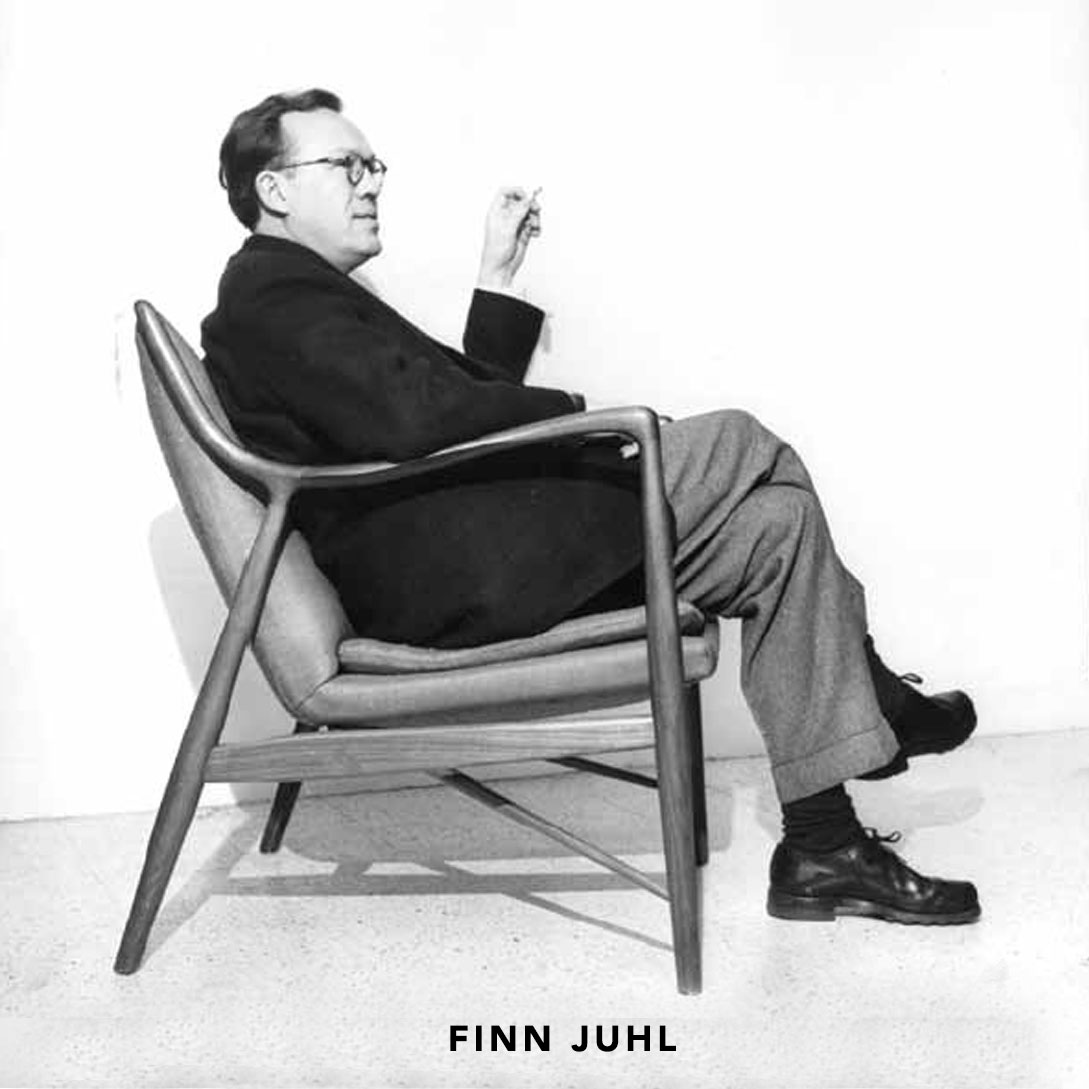Finn Juhl
(1912-1989) Along with Hans Wegner, Arne Jacobsen and Børge Mogensen, Finn Juhl was one of the great masters of mid-20th-century Danish design. Juhl was the first among that group to have his work promoted overseas, bringing the character of the nation’s furnishings — and the inherent principles of grace, craftsmanship and utility on which they were based — to an international audience. A stylistic maverick, Juhl embraced expressive, free-flowing shapes in chair and sofa designs much earlier than his colleagues, yet even his quietest pieces incorporate supple, curving forms that are at once elegant and ergonomic.
Juhl began designing furniture in the late 1930s, in the beginning mostly pieces intended for himself, but after setting up his own office in 1945 he soon became known for his unusual, expressive and sculptural pieces. He initiated a collaboration with master cabinetmaker Niels Vodder, and caused a stir at the annual Cabinetmaker's Exhibition with designs clearly influenced by modern, abstract art. Compared to his contemporaries, Juhl placed more emphasis on form and less on function, a serious break with the tradition of the Klint School.
Finn Juhl's first American assignment came in 1951 when he was asked to design the interior of the Trusteeship Council Chamber at the UN headquarters in New York. An overwhelming task for a young architect, but Juhl gained much praise for his result. This first experience in America and the contacts made proved valuable for many Danish architects, as it paved the way for "Danish Modern" to become internationally known and valued.
Spade Chair in Teak and Cream Leather
Finn Juhl Teak Coffee Table
Finn Juhl teak Side Table




